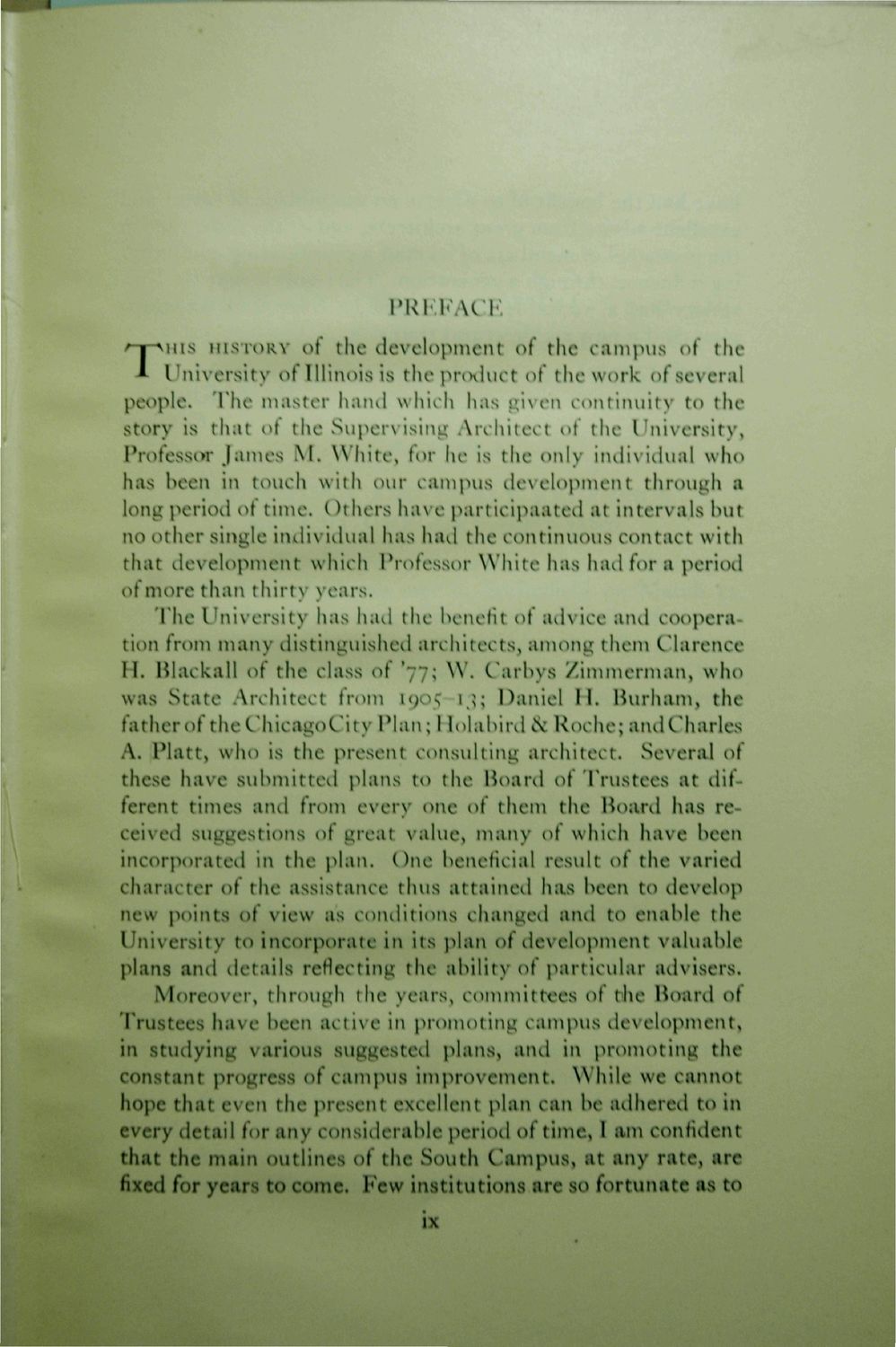| |
| |
Caption: Book - 30 Year Master Plan (Tilton & O'Donnell)
This is a reduced-resolution page image for fast online browsing.

EXTRACTED TEXT FROM PAGE:
PREFACE HIS HISTORY of the development of the campus of the University of Illinois is the product of the work of several people* The master hand which has given continuity to the story is that of the Supervising Architect of the University, Professor James M* White, for he is the only individual who has been in touch with our campus development through a long period of time. Others have participaated at intervals but no other single individual has had the continuous contact with that development which Professor White has had for a period of more than thirty years. The University has had the benefit of advice and cooperation from many distinguished architects) among them Clarence H. Blaekall of the class of *77> W. Carbys Zimmerman, who was State Architect from 1905-13; Daniel H. Burham, the father of the ChicagoCity Plan; 1 Iolabird & Roche; andCharles A. Piatt, who is the present consulting architect. Several of these have submitted plans to the Board of Trustees at different times and from every one of them the Board has received suggestions of great value, many of which have been incorporated in the plan. One beneficial result of the varied character of the assistance thus attained has been to develop new points of view as conditions changed and to enable the University to incorporate in its plan of development valuable plans and details reflecting the ability of particular advisers* Moreover, through the years, committees of the Board of Trustees have been active in promoting campus development, in studying various suggested plans, and in promoting the constant progress of campus improvement. While we cannot hope that even the present excellent plan can be adhered to in every detail for any considerable period of time, I am confident that the main outlines of the South Campus, at any rate, are fixed for years to come* Few institutions are so fortunate as to T ix
| |